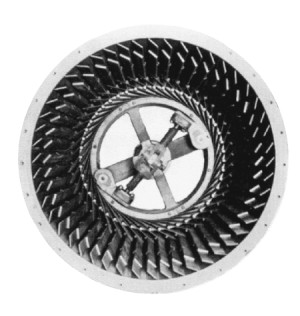|
Traditional equipment
The chocolate process sequences described in old books about chocolate are all alike: mixing, roll refining, conching and, the last step, reducing the viscosity for further processing.
The raw materials used to be mixed in a ‘melangeur’, a shallow heated rotating pan with a slightly slanting wall and a granite bed, with on this bed two large rotating granite millstones. Connoisseurs claim that the traditional melangeur was the best mixing machine ever for making quality chocolate.
The product thus mixed was refined using a roll refiner and then worked in the conche to bring about the mild chocolate flavour; a lengthy process that could often take no less than 72 hours. Finally, cocoa butter and lecithin were added to give the product the viscosity and yield value required for further processing.
Modern equipment
Remarkably enough, this process sequence is still commonly applied. However, the traditional melangeur has been replaced with the Z-kneader, i.e. a heated trough in which the product is kneaded by a Z-shaped agitator; the rollers of the roll refiner have become larger and can produce a finer grind; and modern conches are more suitable for homogenizing, plasticizing and dehumidifying the chocolate mass.
A system like this also presents a number of limitations:
- huge investments have to be made to ensure an efficiently operated
production line;
- the capacities of the units differ; for instance, a large-size kneader has a daily output of 50,000 kg, whereas one conche has a capacity of not more than 6,000 kg/24 hrs.;
- an annual processing amount of at least 250,000 kg is necessary to
ensure costeffectiveness;
- the process is highly labour-intensive, where the labour factor can only be reduced by large-scale, very expensive automation;
- energy consumption is very high;
- the total system takes up a lot of space.
Faced with these limitations, the manufacturers have developed, over the years, a new generation of total systems that combine mixing, refining, conching and standardization in one.
The first McIntyre refiner, made in Scotland, for instance, could handle only one ton, whereas the modern types have a much larger output. Figure 5.4. shows the inside of the McIntyre: a cylinder lined with thin bars (lining bars) that form the serrated wall, and equipped with grinding bars mounted on leaf springs that rotate round the central spindle to grind the product against the lining bars. The Spanish Lloveras machine is based on the same principle.
Figure 5.4: Interior Mc Intyre refiner

It was Wiener of the Netherlands, manufacturers of the ball mill used in the paint industry for refining pigments in oil, that introduced this piece of machinery to the chocolate industry.
The product is pumped in at the bottom of a hardened steel cylindrical vertical drum and forced upwards between the 6 Ø mm steel balls that rotate at high speed, to be released as finely ground chocolate at the top of the mill.
Wiener, Lehmann and other manufacturers have further improved and extended the ball mill to a machine capable of producing high-quality chocolate in a complete process. Systems are sometimes combined, for instance, a roll refiner and a ball mill, or a ball mill and a liquidizer.
The descriptions of the methods in this chapter include, where applicable, a brief discussion of the advantages and disadvantages of the system concerned.
|